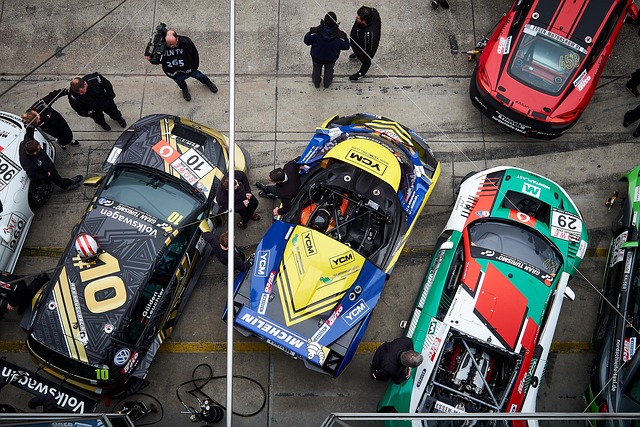Real-time strategy (RTS) gaming isn’t flashy right now, but it’s far from dead. The genre has found new life in smaller, dedicated communities and competitive leagues that value more than just fast clicks. While battle royale and FPS games dominate the mainstream, RTS has stuck around because it offers something different. Something deeper. It’s about foresight, resource management, timing, and thinking five moves ahead.
What separates a weekend warrior from a top-tier player isn’t just fast hands. Sure, action per minute (APM) is part of the game, but the real clincher is decision-making. Elite players win because they know how to read the map, adjust their build order on the fly, and exploit small gaps in the enemy’s game plan. They’re not rushing because they’re panicking — they’re controlling the tempo.
Strategy still trumps speed. A high APM might let you multitask, but if your plan is hollow, it won’t matter. This is why RTS still gets respect in esports circles. It rewards brains just as much as reflexes. And in a gaming landscape full of chaos, there’s something refreshing about a fight that’s won in the mind before it plays out on the screen.
Map Awareness Wins Games
If you’re not reading the map, you’re flying blind. Whether it’s a strategy game or a battle royale, map awareness separates scrappy survivors from confident winners. Knowing what’s happening beyond your immediate screen gives you the edge to control pace, positioning, and timing. Win more, panic less.
Early intel isn’t just nice to have — it’s everything. Scouting early lets you pivot builds, adjust tech paths, and prepare counters before your opponent can execute their plan. Without it, you’re just hoping they don’t throw something unexpected your way. Spoiler: they will.
Smart scouting doesn’t mean wasting units or spamming the fog. Use cheap, mobile units with retreat tools. Time your scouts — don’t just send them out at random. And when in doubt, sacrifice one to learn something useful. One lost scout hurts less than a lost game. Stay informed, fight sharp.
Why Every Second Counts in the Early Game
In strategy games, the early game isn’t just the appetizer. It’s the setup for everything that comes next. Each second is tied to resources, unit production, scouting, or map control. If you’re a few seconds late building a barracks or harvesting extra resources, you’re not just behind in time — you’re behind in progress. Your opponent won’t wait. They’re building while you’re hesitating.
Build orders come in a few classic flavors. Rush builds are all about hitting hard, fast, and early. Great for punishing slow opponents or grabbing map control. Tech builds delay early aggression in favor of better units later on. They’re high risk, but high reward. Eco builds ramp up economy before pushing out — great for longer games where resource control matters most. Knowing when to use each build is part timing, part mind game.
If you want to get sharper, start practicing your openers like drills. Use game timers to hit benchmarks: first worker queued at 5 seconds, first building down at 20 seconds, supply point hit at 1:30. Repetition burns it in. Tools like sandbox modes and replay analysis aren’t just for pros — they keep your timing tight and your reactions automatic.
There’s no second chance in the early game. Either you command time, or it commands you.
Knowing when to expand comes down to reading the map and your enemy. If your opponent is turtling or moving out elsewhere, that’s your green light. Their army across the map means they’re not at home to punish a greedy play. If they’re passive or teching up, slide in an extra base before they expect it. But if they’re aggressive or keeping pressure on you, expanding becomes a gamble.
The risk/reward of fast expands is real. You get more income quicker, which can snowball into a tech and unit lead. But you also thin your defenses and stretch your attention. A fast expand is basically a bet that the other side won’t hit you before you’re ready. If you win the bet, you’re ahead. If not, you’re rebuilding while they’re still producing.
Harass-proofing new bases is non-negotiable. Build tight. Place turrets, cannons, spore crawlers — whatever your race needs. Use buildings to wall off exposed angles. Station a few units nearby or set rally points defensively. Scout around for drops or run-bys. Don’t just expand and forget — every new base needs guardians.
Don’t click fast, click smart
Speed alone doesn’t win fights—precision does. Slamming hotkeys like it’s a drum solo might look impressive, but it won’t save your units if your choices are bad. Good micro isn’t reaction time, it’s decision-making under pressure. That means thinking ahead, keeping cool, and knowing what needs to die first.
Start with the basics. Split against area damage, like fireballs or siege units, so your squad doesn’t evaporate in one shot. Use focus fire to melt high-value targets fast, then pull back weakened units to keep them alive. Surround plays still work—cut off their retreat, isolate their backline—but you don’t need to click a thousand times to pull it off. Just click right.
During intense fights, prioritize. Is the enemy caster about to drop a stun? Nuke it. Are your ranged units exposed to flankers? Shift them. Don’t let a clump of weak units soak damage when your heavy hitters are ready to clean up. The smart play is knowing where to look, when to click, and why it matters.
Spotting an opponent’s build early can mean the difference between holding the line and getting steamrolled. Whether it’s a fast expand, rush strat, or sneaky tech shift, reading their path before it hits critical mass is essential. Watch for scouting tells, unit timings, and resource anomalies. If it feels off, it probably is.
Once you clock their direction, it’s on you to pivot. Tech switches, counter-unit comps, and quick upgrade priorities become your tools. Sitting still is how you lose. Adaptation doesn’t have to be perfect, just fast enough to stay alive and mount pressure.
It all comes back to mental flexibility. The best players don’t obsess over one build—they stay calm, interpret the signs, and reroute when things shift. In volatile matchups, resilience isn’t just about mechanics. It’s about mindset.
Momentum Matters More Than Map Control
Vlogging in 2024 isn’t about owning the entire landscape. It’s about keeping things moving. Momentum beats static dominance. You can spend months trying to build out a perfect content calendar or master every platform. But if you’re not posting with purpose and keeping your audience dialed in, you’re stalling. Motion creates attention. Attention drives growth.
So how do you force your opponent—or in this case, the algorithm—to play your game? Make the first move. Post fast. Respond quicker. Drop content that sparks conversation or reaction. When you lead with energy, the platforms start reacting to you instead of leaving you chasing trends.
Pressure play works. Cue up teaser clips before your main drop. Drop a smaller story today to prime the pump for tomorrow’s bigger reveal. Fake-outs work too. A sudden concept shift mid-vlog or a shocking twist in a short can break scrolling patterns and hold people longer. These aren’t gimmicks if they’re done with craft. They’re signals that you’re in control—and that’s the real win.
Forget the old rock-paper-scissors logic. In today’s competitive gaming and vlogging space (yes, both), counter mechanics aren’t that simple. A unit or creator’s strength doesn’t just depend on what they’re up against—it’s about how abilities, upgrades, terrain, and tactics stack. Think of it like chess with grenades and personality.
Abilities now have cooldown timing and upgrade paths that completely change how matchups play out. Terrain offers bonuses or disadvantages you can’t ignore. And upgrades are no longer just stat boosts, they often redefine role and utility mid-game. It’s layers of counters folded into each other.
In this kind of ecosystem, knowing what your opponent is running—and planning your comp accordingly—is everything. A well-timed swap, ability cancel, or clutch terrain grab can flip things faster than raw power ever could. It’s prep over panic, brains over brawn.
Want to see how this plays out beyond just vlogs and strategy games? Check out this solid crossover read: How to Build the Perfect Team Composition in MOBAs
Why Positioning Changes Everything
In any competitive space, positioning isn’t decoration. It’s the difference between getting seen and getting steamrolled. For vloggers, this means picking your spots—literally and strategically. Where you film, how you frame, and when you drop content can tilt the game in your favor.
Choke points, elevations, and vision lines aren’t just game theory—they’re practical tools. A well-selected filming location with a unique viewpoint or a clear visual hook can set your content apart in seconds. Viewers scroll fast; positioning lets you lock them in without asking.
Same goes for timing. Know when your audience is watching. Drop when others aren’t. Small creators can punch above their weight simply by choosing battles wisely. Instead of yelling louder, aim smarter. This is how you create favorable engagements by design—not luck.
Get tactical, not louder. Good positioning costs nothing and changes everything.
Custom control schemes are the quiet backbone of high-level play. Fluid gameplay starts with keybinds that match your instincts. If you’re reaching too far or double-tapping keys out of habit, there’s already friction. Take time to break away from defaults. The goal is function over tradition.
Fast switching between control groups and economy commands is what separates competent from crisp. Assign separate fingers to your core actions. One for army control, one for camera jumps, another for production or resource tabs. You want to flick from map to macro to micro without thinking.
And it’s the small inputs that accumulate. A cleaner control setup reduces dead time between actions. That split-second saved on each command adds up to real APM gains. Efficiency isn’t about speed for speed’s sake. It’s about doing more with less motion, less drag. The game rewards smooth execution. Your setup should help you get there.
Watch your own replays, not to beat yourself up, but to learn. Think of them as post-game film sessions. Every misstep is data. Maybe you post too late in the day. Maybe your edits kill the pacing. Maybe you’re chasing trends without a clear voice. That stuff shows up if you’re willing to rewatch and take notes.
Patterns emerge. Is there a dip in watch time after a certain type of intro? Are comments stronger on shorter, more focused uploads? Instead of guessing, break it down. Then, make reviewing part of your weekly routine. Build a feedback loop where every piece of content teaches you something—because that’s how you level up without burning out.
Every Match Is a Problem to Solve
There’s no formula that guarantees success. Every match is a fresh challenge, packed with moving parts and unpredictable opponents. Treating it like a set script or checklist misses the point. The smartest players don’t just follow plans—they adapt in real time.
Speed matters, but only if it’s paired with good decisions. The fastest reaction won’t win games if it’s the wrong move. Reading the field, spotting patterns, making micro-adjustments on the fly—that’s where top-tier play lives.
So keep your edge. Watch more, learn fast, and sharpen your instincts. The competition isn’t slowing down. Curiosity, precision, and focus are what separate the good from the dominant.





